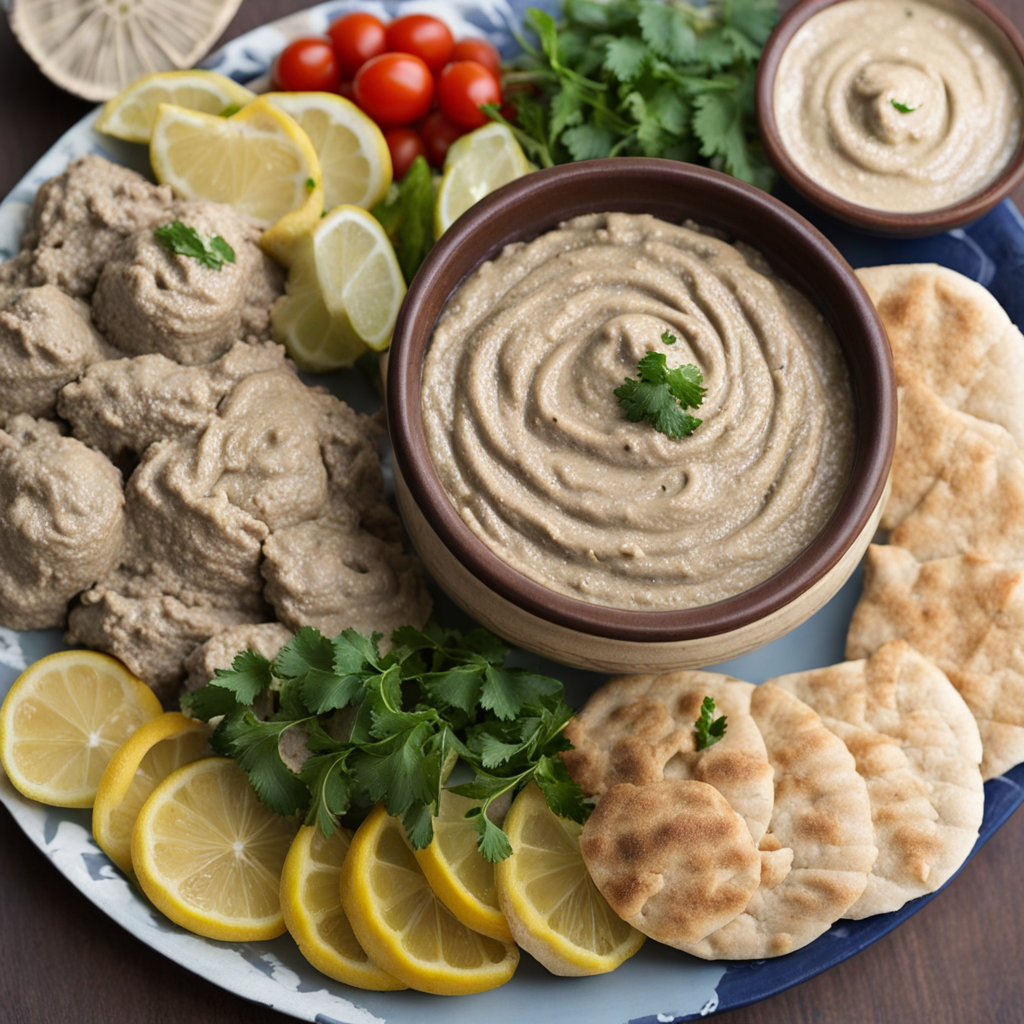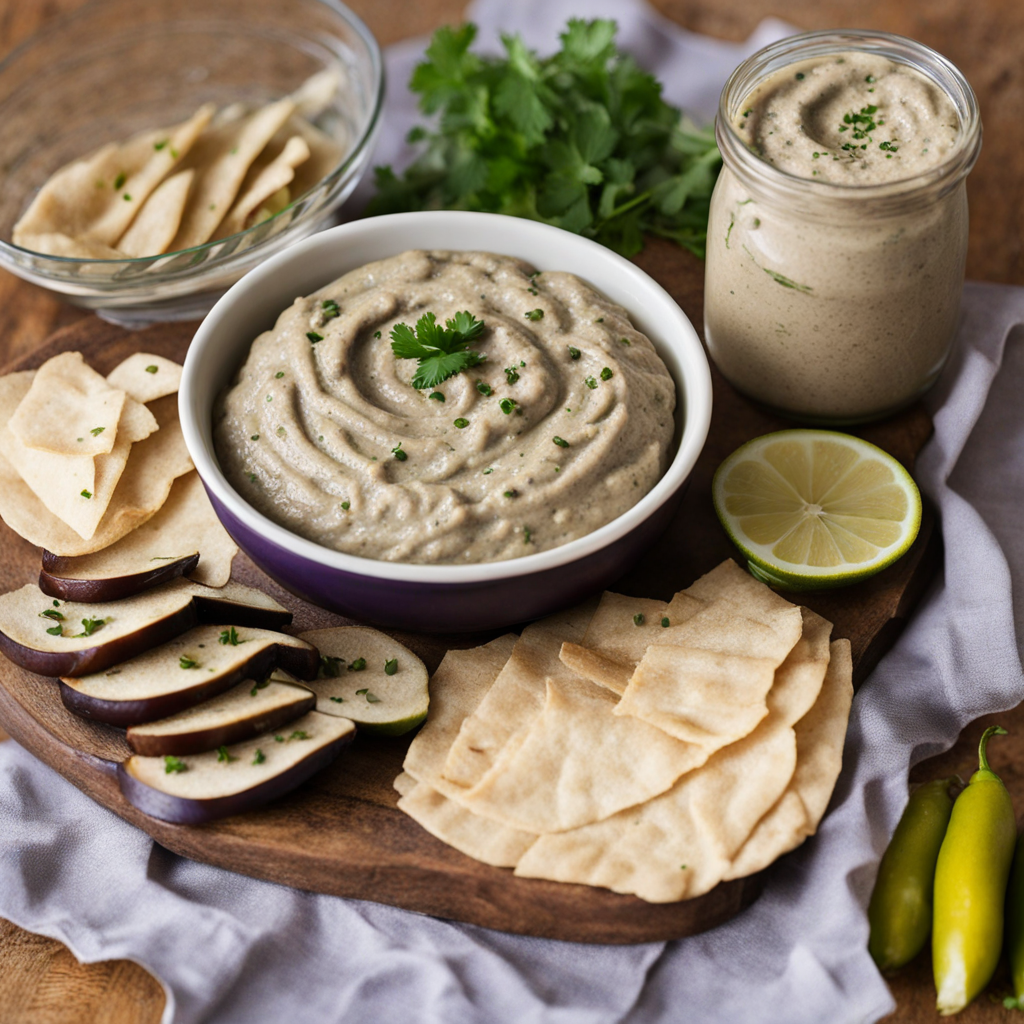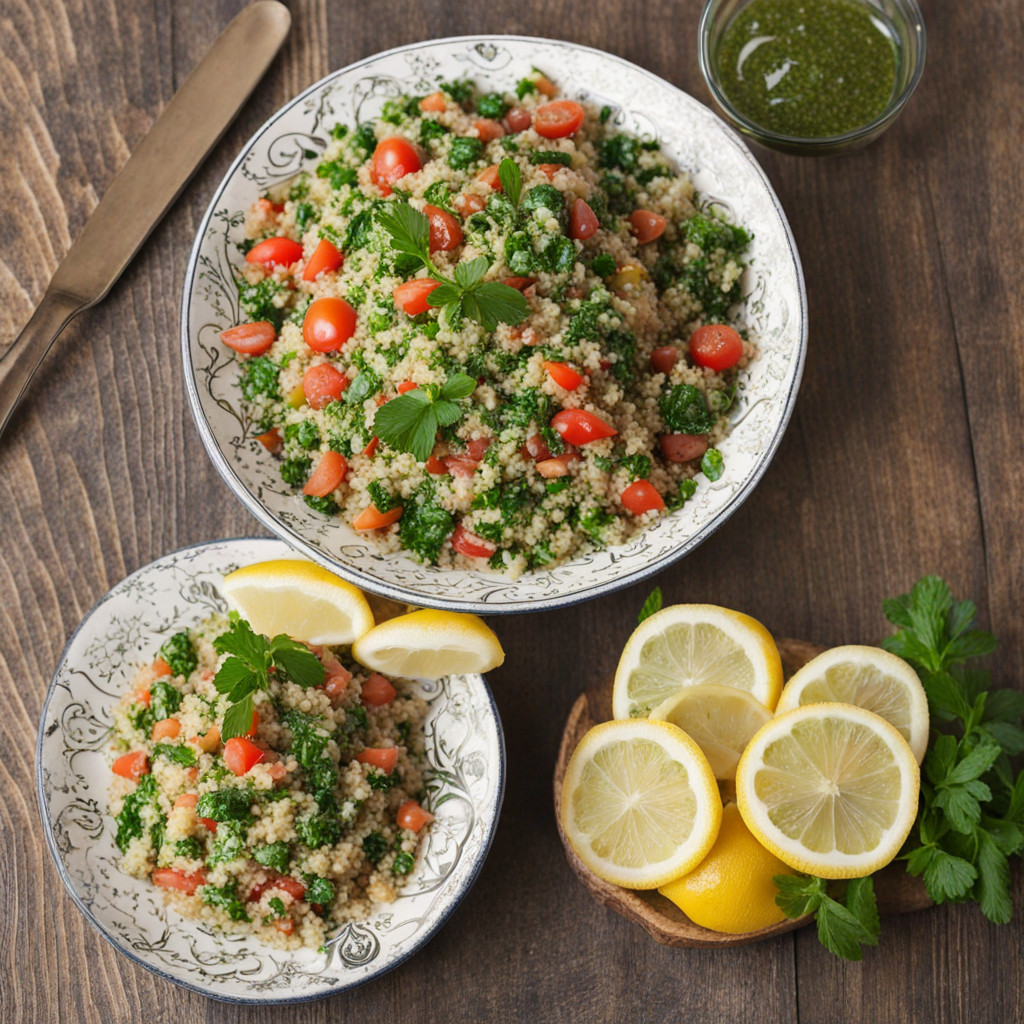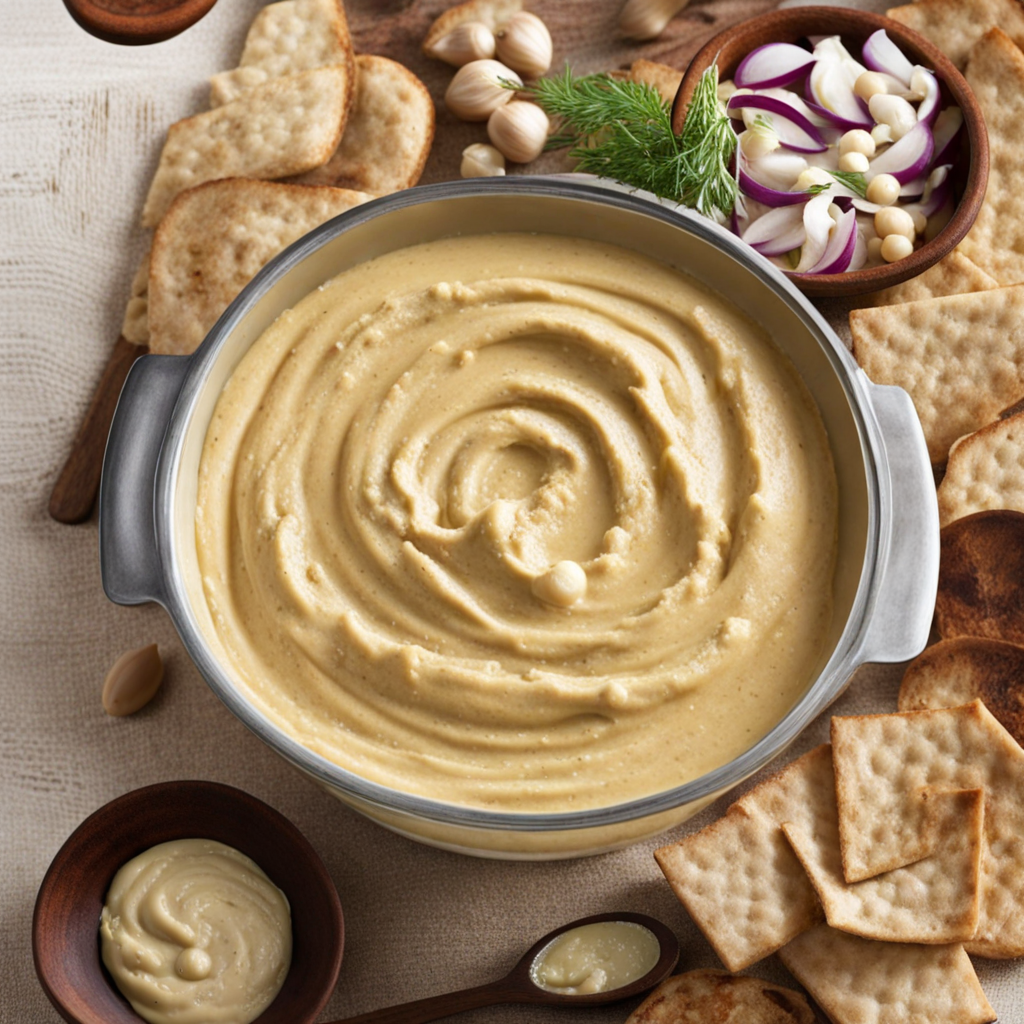Mutabbal
Mutabbal is a traditional Jordanian dish that embodies the rich culinary heritage of the region, primarily made from roasted eggplants. The eggplants are charred over an open flame, lending a smoky depth to the dish that is both unique and inviting. Once roasted, the eggplants are peeled and blended with tahini, garlic, lemon juice, and a touch of salt, creating a creamy, luscious texture that is both satisfying and refreshing. This combination of flavors delivers a delightful balance of earthiness from the eggplants and nuttiness from the tahini, making every bite a compelling experience. The preparation of Mutabbal is as much an art as it is a culinary technique. The blending of ingredients is done meticulously, allowing the flavors to meld harmoniously. The addition of fresh herbs or a sprinkle of pomegranate seeds on top not only enhances the visual appeal but also adds a burst of freshness and acidity to the dish. Mutabbal can be enjoyed as a dip, served alongside warm pita bread, or as part of a larger mezze platter, showcasing its versatility and making it a staple in Jordanian dining. What sets Mutabbal apart from similar dishes, like baba ghanoush, is its distinct richness and the depth of flavor achieved through the roasting process. The interplay of smokiness, creaminess, and acidity creates an unforgettable taste experience that captures the essence of Middle Eastern cuisine. Whether you're indulging in it at a local eatery in Jordan or trying your hand at making it at home, Mutabbal is sure to transport your taste buds on an exciting journey through the flavors of this vibrant country.
How It Became This Dish
Origin of متبل متبل, a beloved dish from the Levant region, particularly popular in Jordan, has its roots deep in the rich agricultural history of the area. Traditionally made with roasted eggplant, tahini, garlic, lemon juice, and various spices, متبل is a vibrant representation of the flavors and ingredients that thrive in the Mediterranean climate. The eggplant, a staple of Middle Eastern cuisine, is believed to have been cultivated in the region since ancient times, with references dating back to the 4th century AD in Arabic texts. The process of making متبل begins with the roasting of eggplants over an open flame, allowing the skin to char and impart a smoky flavor to the flesh. This technique not only enhances the dish's taste but also reflects the traditional cooking methods used in many Middle Eastern households. The blending of the roasted eggplant with tahini—a paste made from ground sesame seeds—garlic, and lemon juice creates a creamy, rich dip that is both nutritious and flavorful. The combination of these ingredients symbolizes the agricultural bounty of the region and the interconnectedness of its cuisine. \n\n Cultural Significance In Jordanian culture, متبل is more than just a dish; it represents hospitality and communal sharing. It is often served as part of a meze platter during gatherings, celebrations, and family meals. The act of sharing food is deeply embedded in Jordanian customs, where a meal is not merely about sustenance but also about building relationships and fostering community. The presence of متبل at any social occasion signifies warmth and generosity, inviting guests to savor the rich flavors of the region. The dish also reflects the broader cultural exchanges that have occurred throughout Jordan's history. The Levant has long been a crossroads of civilizations, with influences from Arabic, Turkish, and Mediterranean cuisines. As a result, متبل has absorbed elements from these diverse culinary traditions, further enriching its profile. The blending of flavors and techniques showcases the adaptability of the dish and its ability to resonate with various cultural identities, making it a symbol of unity amid diversity. \n\n Development Over Time As with many traditional dishes, the preparation and presentation of متبل have evolved over time. In its early iterations, the focus was primarily on the basic ingredients—roasted eggplant, tahini, and garlic. However, as culinary practices have evolved, so too have the interpretations of متبل. Contemporary versions may include additional spices such as cumin or sumac, while some variations incorporate yogurt for an added creaminess. Moreover, the growing popularity of vegetarian and vegan diets has positioned متبل as a staple in modern culinary scenes, appealing to a broader audience that values plant-based options. The dish is often featured in restaurant menus around the world, promoting the flavors of Jordanian and Levantine cuisine to international diners. This global recognition has helped elevate the status of متبل from a traditional home-cooked dish to an ambassador of Jordanian gastronomy. \n\n Regional Variations While متبل is widely recognized in Jordan, it also exists in various forms throughout the Levant. For instance, in neighboring Lebanon, a similar dish known as baba ghanoush features roasted eggplant but often includes more varied flavor profiles and texture due to the addition of more ingredients such as pomegranate seeds or spices. This regional variation highlights the adaptability of the basic concept of متبل while showcasing local preferences for flavor and texture. The variations also reflect the diversity of the ingredients available in different regions. In areas where fresh herbs are abundant, such as parsley or mint, these may be added to enhance the freshness of the dish. Similarly, the method of preparation may vary; while some prefer a smoother texture achieved through blending, others enjoy a chunkier consistency that retains the character of the roasted eggplant. These differences illustrate how local customs and tastes shape the interpretation of متبل across the Levant. \n\n Modern-Day Popularity In recent years, the global trend of embracing Middle Eastern cuisine has further propelled the popularity of متبل. As food enthusiasts and chefs explore the flavors of the Levant, they have introduced this dish into mainstream culinary culture. It is now a common feature in restaurants, food festivals, and culinary events, often celebrated for its health benefits and rich taste profile. The rise of social media has also played a significant role in this resurgence, with visually appealing presentations of متبل capturing the attention of food bloggers and influencers worldwide. Moreover, the dish's versatility makes it an ideal choice for various occasions, from casual gatherings to formal dining experiences. Whether served as a dip with pita bread, a spread on sandwiches, or a side dish accompanying grilled meats, متبل has proven to be a crowd-pleaser that transcends cultural boundaries. Its ability to adapt to modern dietary preferences, including gluten-free and dairy-free options, ensures its relevance in contemporary gastronomy. \n\n Conclusion In conclusion, متبل is not just a culinary delight but a reflection of Jordan's rich cultural heritage and agricultural bounty. Its evolution from a traditional dish to a modern staple illustrates the dynamic nature of food and its capacity to connect people across cultures and generations. As we continue to explore and appreciate the flavors of the Levant, متبل stands as a testament to the enduring legacy of Jordanian cuisine and its ability to bring people together around the table.
You may like
Discover local flavors from Jordan







